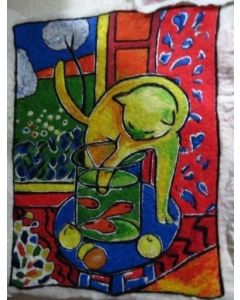Tapestry Wall Art
From a restricted perspective, the woven artwork is known as an item made by one of the manufactories established in 1662 in Paris, Saint-Marcel. This workshop was initially the King's own workshop. It joined the private organizations that make backdrop, including Flemish Feyker m. Comans et al. A workshop established by Planche in 1607. This venture was situated in the structure of the previous studio of celebrated painters - Gobelins, from which comes the name of hand created cover artistic creations.
The woven artwork was made of hued fleece and silk string (here and there silk). They were hand weaved into discrete pieces on an extraordinary sewing machine and afterward integrated with a dainty silk string. In the nineteenth century, woven artworks were by and large called backdrop and thick canvases made by machine. The specialty of woven artwork was resuscitated during the 1930s.
The specialty of embroidery was built up in Georgia during the 60s of the XX century. He added to the advancement of enhancing applied and great enlivening craftsmanship during this period. The Georgian mat affected the arrangement of the embroidered artwork shading and the comprehension of evenness.
Georgian embroidered artwork has a show and open reason. It is generally great, firmly woven. Alongside the convention of rectangular shape, there are additionally embroideries of various shapes. At the turn of the XX-XXI hundreds of years, the theoretical decorative tapestry wall art work consumed more space. It has become a conventional structure and is primarily normal for crafted by youthful Georgian craftsmen.


Comments
Post a Comment